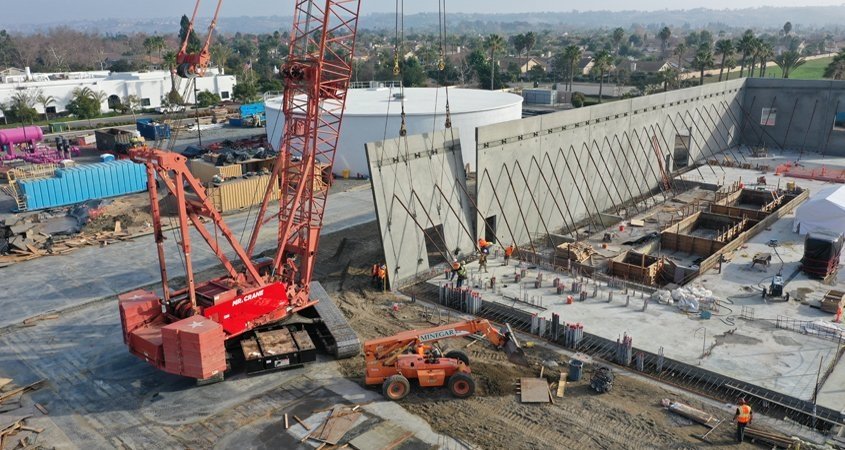 Pure Water Oceanside construction remains on schedule for completion in 2022. The Oceanside project will purify recycled water to create a new, local source of high-quality drinking water that is safe, drought-proof and environmentally sound. Photo: San Diego County Water Authority
Pure Water Oceanside construction remains on schedule for completion in 2022. The Oceanside project will purify recycled water to create a new, local source of high-quality drinking water that is safe, drought-proof and environmentally sound. Photo: San Diego County Water AuthorityWater Conservation Helps San Diego Regional Supply During Drought
Water conservation is a way of life in the San Diego region, whether during drought periods or wet years. While the region is in drought like much of the Southwest U.S., San Diego County is not experiencing a water shortage. That’s because the Helix Water District, and the other water utilities serving the region, have worked together for 25 years to conserve water and invest in new water resources.
The San Diego County Water Authority, its 24 member agencies, and the water ratepayers of San Diego County, have made investments to increase water supply reliability.
June 2021 was the hottest June on record in the U.S.
Map from InciWeb

On July 8, Governor Newsom declared a drought emergency everywhere except Southern California
Map from Cal Matters

In the San Diego region, water utilities work together to develop water supply
San Diego County Water Authority board meeting photo from Water News Network

San Diego residents use half the water they used in the 1990s
Water efficient landscaping at The Water Conservation Garden

Water supply from the Colorado River
Colorado River photo from KUER Public Radio

Drought-proof water resources
In 2014, the Water Authority completed the Claude “Bud” Lewis Carlsbad Desalination Plant to turn Pacific Ocean water into drinking water. It’s the largest desalination plant in the western hemisphere. Now, we’re focused on turning recycled water into drinking water by using reverse osmosis, just like at the Carlsbad plant, and other advanced water treatment technology.
New water supply projects underway
Helix is working with Padre Dam Municipal Water District, the city of El Cajon and the county of San Diego on the East County Advanced Water Purification Program, and the cities of San Diego and Oceanside are developing “Pure Water” programs.
Reverse osmosis cannisters at the Carlsbad Desalination Plant. Photo from Poseidon Water

More space to store water
San Vicente Dam photo from the San Diego County Water Authority

(Editor’s note: The Helix Water District is one of the San Diego County Water Authority’s 24 member agencies that deliver water across the metropolitan San Diego region.)



